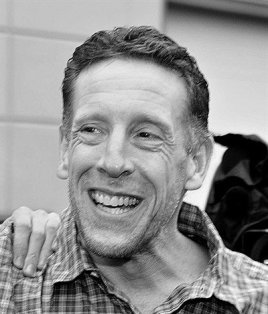In December 2009, Philip Scott Cannon of Polk County, Oregon was released from prison after his conviction was found to be based on ‘junk science’. By this time, he had served over 10 years.
The story of his wrongful imprisonment began on 23rd November 1998, when Bimla Boyd noticed that the mobile home of a neighbour appeared to be on fire. Upon investigating, she discovered the bodies of three people; Jason Kinser, his girlfriend Suzan Osborn, and Celesta Graves. All three victims had been shot. Boyd promptly called the police, and a murder investigation ensued.
Boyd stated that earlier in the day she had noticed a maroon van parked nearby, a van which happened to belong to Philip Scott Cannon. Around the same time, local men Jeremy Olsen and Larry Weaver were on their way to deliver water to the victims’ trailer. Upon arrival at the trailer, Olsen and Weaver claimed that they were met by Cannon, who was said to be “acting strangely”. Cannon informed the men that they should not go into the trailer because Jason Kinser was upset and in the midst of a heated argument with an unknown Hispanic man. Olsen and Weaver subsequently left without entering the trailer. Based on this eyewitness testimony and the fact that Cannon owned the maroon van spotted nearby, he soon became the prime suspect.
When questioned by police, Cannon maintained his innocence and claimed Kinser had called him over to give an estimate for fixing a plumbing problem in the trailer, after which he promptly left when Kinser began arguing with another man. However the police had a very different impression of the situation, believing that Cannon was a meth user and Kinser his dealer. Further suspicion fell on Cannon when a prisoner, Steven Brobston, informed police that he had entrusted Cannon with a box containing $16,000 to be used to support Celesta Graves, Brobston’s girlfriend and one of the victims. With the circumstantial evidence mounting, investigators searched Cannon’s home, finding the lockbox but no sign of the money. They did however stumble upon a number of weapons and ammunition. This was sufficient to arrest Cannon, who was taken into custody on 3rd December and charged with three counts of aggravated murder and the illegal possession of a firearm.
During the trail, Olsen, Weaver and Boyd were all called upon to recount their experiences of seeing Cannon near the trailer on the day of the murder. Of course this evidence was purely circumstantial, so an expert witness was called upon to study the bullets collected from the crime scene and those recovered from the suspect’s home. Michael Conrady of Oregon State University’s radiation center conducted a metallurgic analysis of the bullets known as comparative bullet lead analysis. This technique involves the application of various analytical techniques, but primarily atomic emission spectroscopy, to bullet composition determination. The method aims to establish the composition of metals in the bullet, such as copper, tin, antimony and silver, and compare profiles to ascertain whether two bullets are chemically identical. Based on this analysis, Conrady testified that the bullets from the crime scene and those from Cannon’s home were chemically identical, therefore Cannon’s ammunition was used to kill the three victims. However the weapons found in Cannon’s home were not connected to the murders, nor did police establish a reasonable motive for the triple homicide. Despite these shortcomings, on 28th February 2000, Cannon was found guilty and sentenced to three life sentences with no parole.
At the time of Cannon’s trial, the use of comparative bullet lead analysis was already under scrutiny, with some believing the reliability of the technique was unfounded. In 2005, the national Academy of Science discredited the technique and deemed it ‘junk science’, and soon after the FBI abandoned the use of this method altogether. As Cannon’s conviction was so heavily reliant on the bullet analysis, in 2009 a Polk County Circuit judge vacated Cannon’s original conviction. Incidentally it was now apparent that police involved in the original trial had hired Conrady to conduct the bullet analysis because the Oregan State crime lab had refused on the basis of the technique being scientifically unreliable. In order for a re-trial to take place, the original bullets were demanded in order to conduct further analysis. Polk County prosecutors insisted that the original trial evidence had been sent to the Department of Justice when Cannon had appealed his conviction, however Assistant Attorney General Susan Gerber, who had been assigned the case, claimed she had never received this evidence. It later came to light, when Gerber was suspended from her position on assault charges, that she had had the evidence all along, locked away in a filing cabinet.
In light of all of this, Cannon’s conviction was dismissed and he was released from prison. By this point he had spent over a decade behind bars. No other arrests have been made in relation to the murder of Kinser, Osborn and Graves.
References
Michigan State University National Registry of Exonerations. Philip Scott Cannon. [Available online] https://www.law.umich.edu/special/exoneration/Pages/casedetail.aspx?caseid=3083
Photo Credit: Polk County Itemizer Observer. Cannon retrial up to Polk DA. [Available online] http://www.polkio.com/news/2011/oct/25/cannon-retrial-up-to-polk-da

